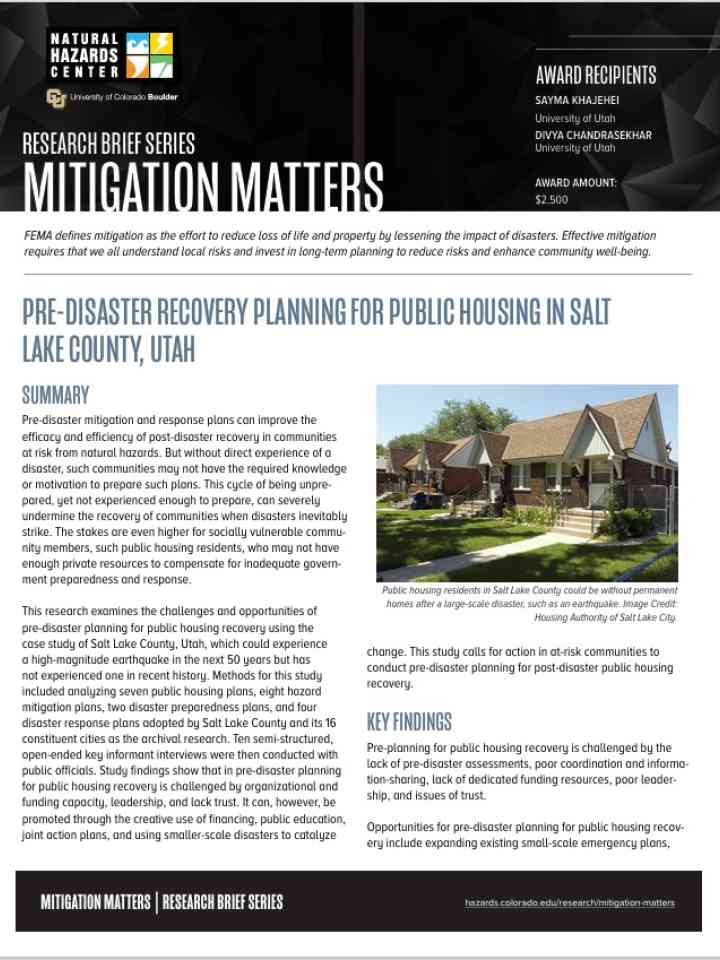Pre-Disaster Recovery Planning for Public Housing in Salt Lake County, Utah
Public housing residents and subsidized housing renters face severe challenges in post-disaster housing, but cities with little experience of disasters may have limited knowledge of how to help them. While research on post-disaster recovery policy has grown, we still lack critical understanding of pre-disaster planning for public housing recovery, which can make recovery challenging for socioeconomically vulnerable groups.
Using Salt Lake County, UT, as a case study, this research examines pre-disaster policies focused on providing post-disaster housing for public housing residents. Salt Lake County faces a 57% probability of experiencing a 6.75 magnitude earthquake in the next 50 years. We used archival research techniques and semi-structured key informant interviews with local emergency management, city planning, and housing officials. Using qualitative analyses, we examined post-disaster housing plans, planning motivation, challenges, opportunities, and coordination between various entities. Findings suggest that pre-planning for public housing recovery is challenged by the lack of pre-disaster assessments, poor coordination and information-sharing, lack of dedicated funding resources, poor leadership, and issues of trust.
Opportunities for pre-planning include building on existing small-scale emergency plans, using existing funds more creatively, creating joint plans for post-disaster public housing recovery, public education on the importance of pre-planning for post-disaster recovery, and reviewing existing response and recovery protocols.
Explore further
